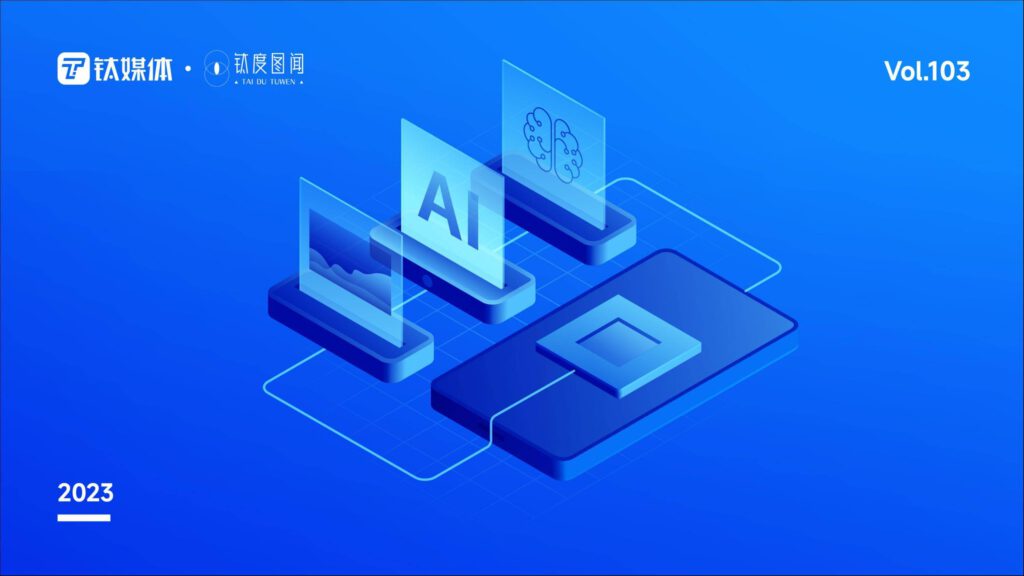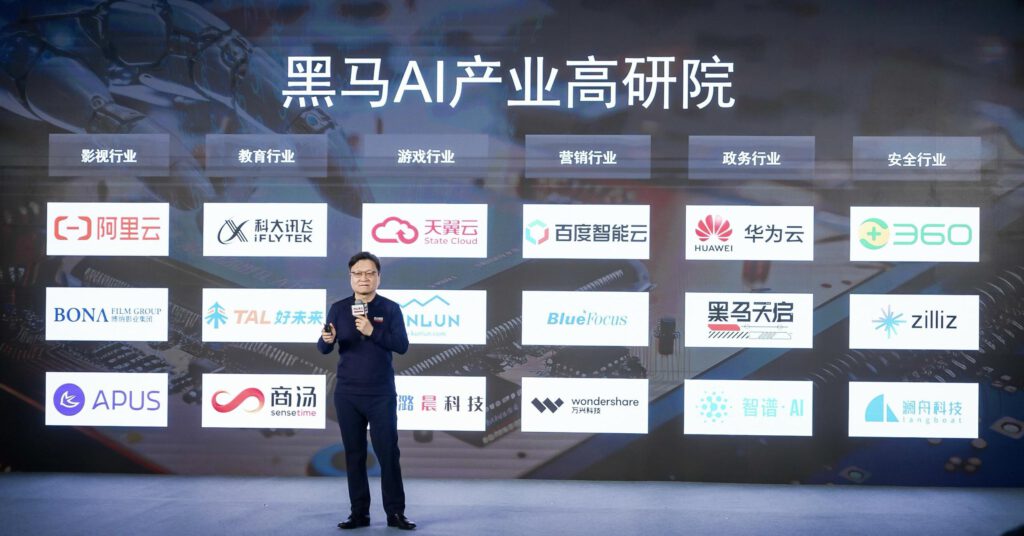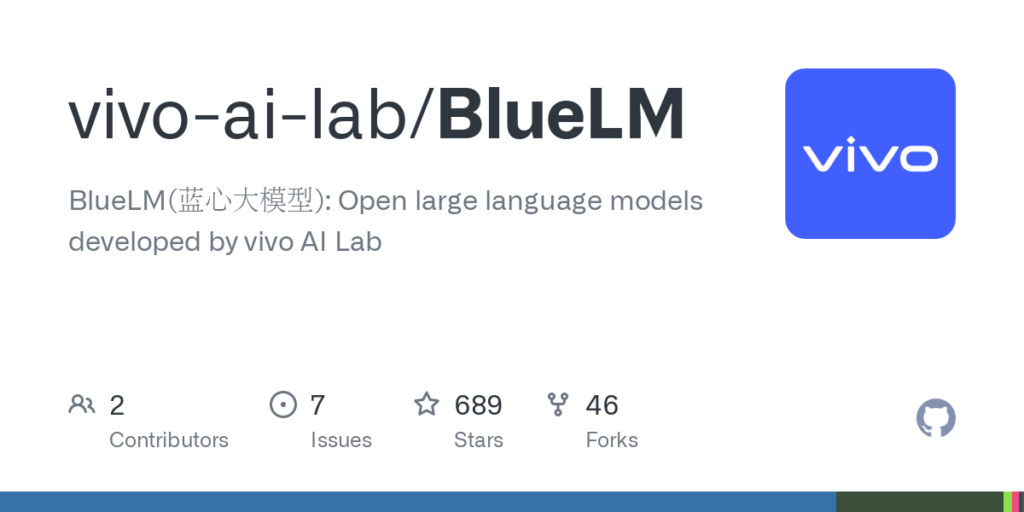
At the recently concluded two sessions in China, AI once again captured widespread attention. This year’s government work report not only reiterated AI several times but also introduced the groundbreaking “AI+” initiative for the first time, providing a visionary blueprint for future trends and strategic directions.
Reflecting on previous years’ government work reports, from the inception of “Internet +” in 2015 to the advent of “intelligence +” in 2019, each initiative has effectively spurred industrial transformation and upgrading at various stages.
Recently, during the Boao Forum for Asia (BFA) Annual Conference 2024, People’s Daily, China’s largest newspaper, unveiled a report that delves into the trajectory of China’s AI industry development and offers insights into the profound economic implications of AI technology.

According to the China Center for Information Industry Development (CCID), by 2023, the enterprise adoption rate of generative AI in China had soared to 15%, with a market size of approximately $ 1.99 trillion. Forecasts suggest that by 2035, generative AI is poised to generate nearly $ 12.46 trillion in economic value globally, with China accounting for over 30 trillion yuan of this total.
In this unprecedented era of technological advancement, AI big models have emerged as the vanguards of innovation, with Chinese companies establishing a diverse industrial ecosystem.
According to incomplete statistics, in 2023, there were over 100 types of AI large model products nationwide across various domains. This momentum not only underscores significant technological breakthroughs but also showcases substantial potential in commercial applications, catalyzing transformative shifts in social productivity.
While the industry’s development presents unprecedented opportunities, the report judiciously addresses the challenges accompanying this growth, urging a balanced perspective.
The report highlights that the training speed and output quality of AI big models are directly correlated with computational power, with the demand for arithmetic power escalating alongside the model scale. Moreover, the current architecture of mainstream large models exhibits numerous constraints, including substantial consumption of computational resources and memory storage.

A set of limitations hindering the commercialization of domestic large models poses a significant challenge. Despite the emergence of several large models in the current market, explosive real-world applications are yet to materialize.
In realizing the potential of any new technology in production and daily life, the application scenario plays a pivotal role. Looking ahead to the trajectory of China’s AI big model industry, the development of both general big models and industry-specific big models is indispensable. Generalized big models excel in ubiquitous scenarios such as text summarization, dialogue Q&A, and logical reasoning, while industry-specific big models cater to specialized sectors like finance, government affairs, and healthcare, facilitating more tailored solutions. The combined development model of generalization and specialization is poised to offer more effective and personalized solutions across various societal domains.
Individual users encounter a common challenge in selecting suitable scenarios for utilizing large models. The report anticipates that cloud and end-side big models will address diverse scenario needs, indicating that the amalgamation of end-cloud matrixed big models may emerge as a significant development trend.
Additionally, the report positively forecasts the open-source trend of generalized large models, envisioning a landscape where small developers are no longer constrained by computational resources and can leverage complex model capabilities, fostering further innovation and industry growth.

As a longstanding strategic partner of the Boao Forum for Asia, Vivo participated in this year’s annual conference, sharing the company’s achievements and perspectives on artificial intelligence. Additionally, Vivo was prominently featured in the report as a leading enterprise exemplifying the end-cloud combination of big models.
In recent years, Vivo has diligently expanded its presence in the artificial intelligence domain, demonstrating robust technical prowess and forward-thinking initiatives in AI big model research and application. With consideration for both cloud and end-side applications, Vivo has introduced a diverse portfolio comprising five self-developed big models across varying parameter scales, constituting a formidable and highly adaptable open-source big model matrix.
Within Vivo’s Blue Heart big model matrix, different parameter-scale models cater to distinct scenarios and requirements. For instance, the 1 billion parameter big model is tailored for end-side scenarios, offering localized text summarization and image stylization capabilities, while the 7 billion parameter big model serves dual end-cloud purposes, facilitating language understanding and text generation.
The main model boasting 70 billion parameters excels in cloud services, performing admirably in scenarios such as role-playing and knowledge quizzes, balancing cost and performance. For more complex tasks, Vivo has introduced two models featuring 100 billion parameters, providing a more sophisticated intelligent experience with extensive knowledge. At the product level, Vivo has launched offerings in AI and profound user understanding, spanning from semantic search to text and image generation.

Furthermore, Vivo’s sustained investment in AI has not only refined its products but also contributed to industry advancement. Vivo’s 7 billion parameter big model stands as the first open-source big model in the smartphone industry, inviting collaboration from developers to co-create intelligent experiences and foster AI ecosystems. Echoing these efforts, a vice president of Vivo and president of the Vivo AI Global Research Institute emphasized the company’s commitment to leveraging its technological advantages in end-side big model research and matrix development to facilitate broader application experiences in the smartphone industry, thereby reducing the cost of big model deployment and democratizing the benefits of AI technology.
Since 2017, Vivo has been at the forefront of AI research, establishing the AI Global Research Institute in 2018, making it one of the pioneering Chinese smartphone companies to focus on AI. Currently, Vivo leads in all four fundamental elements of artificial intelligence: data, manpower, algorithms, and computational power.
The evolution of the real economy demands enterprises to exhibit a heightened sense of responsibility, not only in benefitting society but also in driving industry leaps and fostering synergistic development. It is anticipated that technology enterprises like Vivo will continue to enhance production and daily life, accelerating the advancement of new-quality productivity, fostering industry innovation, and empowering individuals for a better future.
(Source: Github, CGTN)



